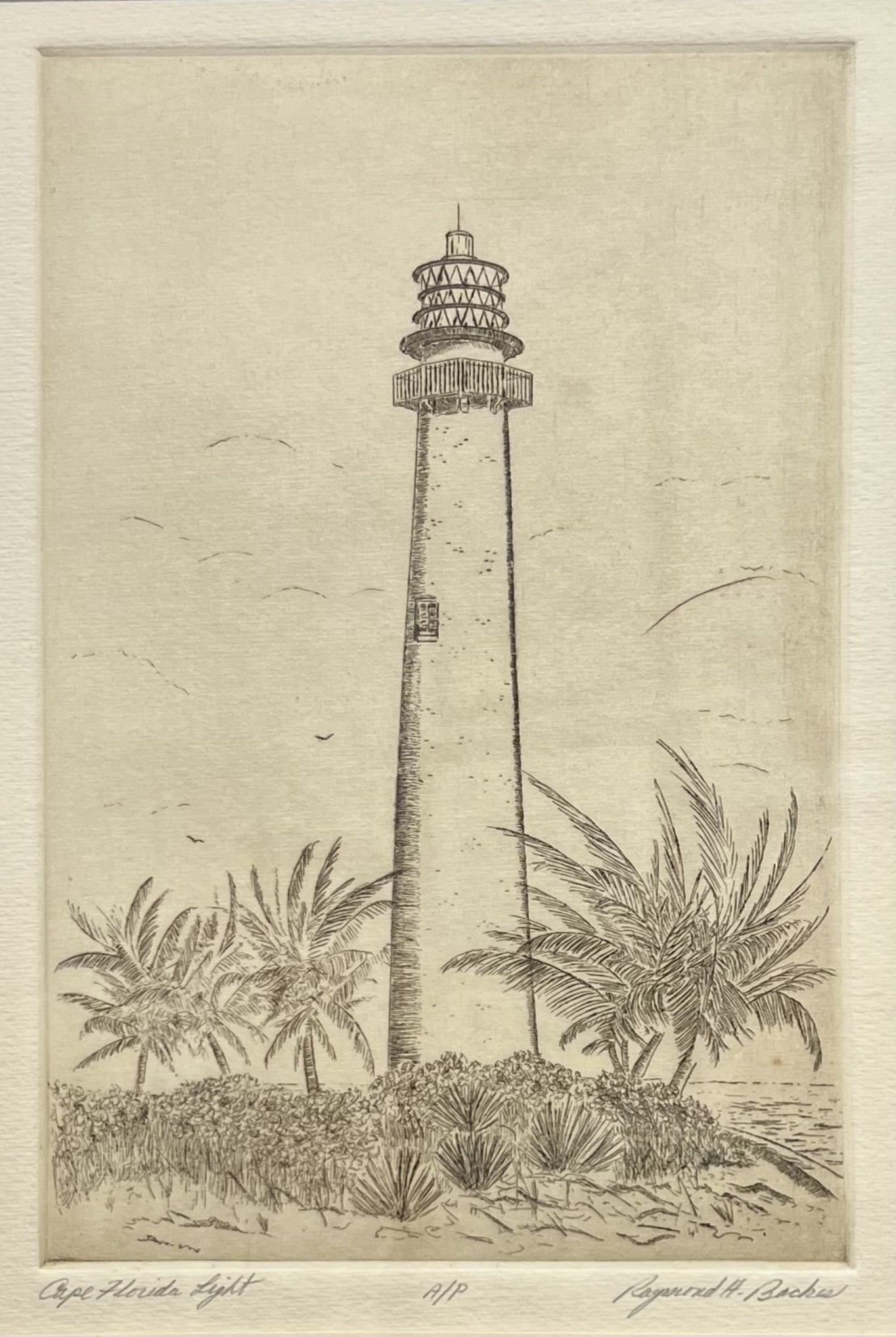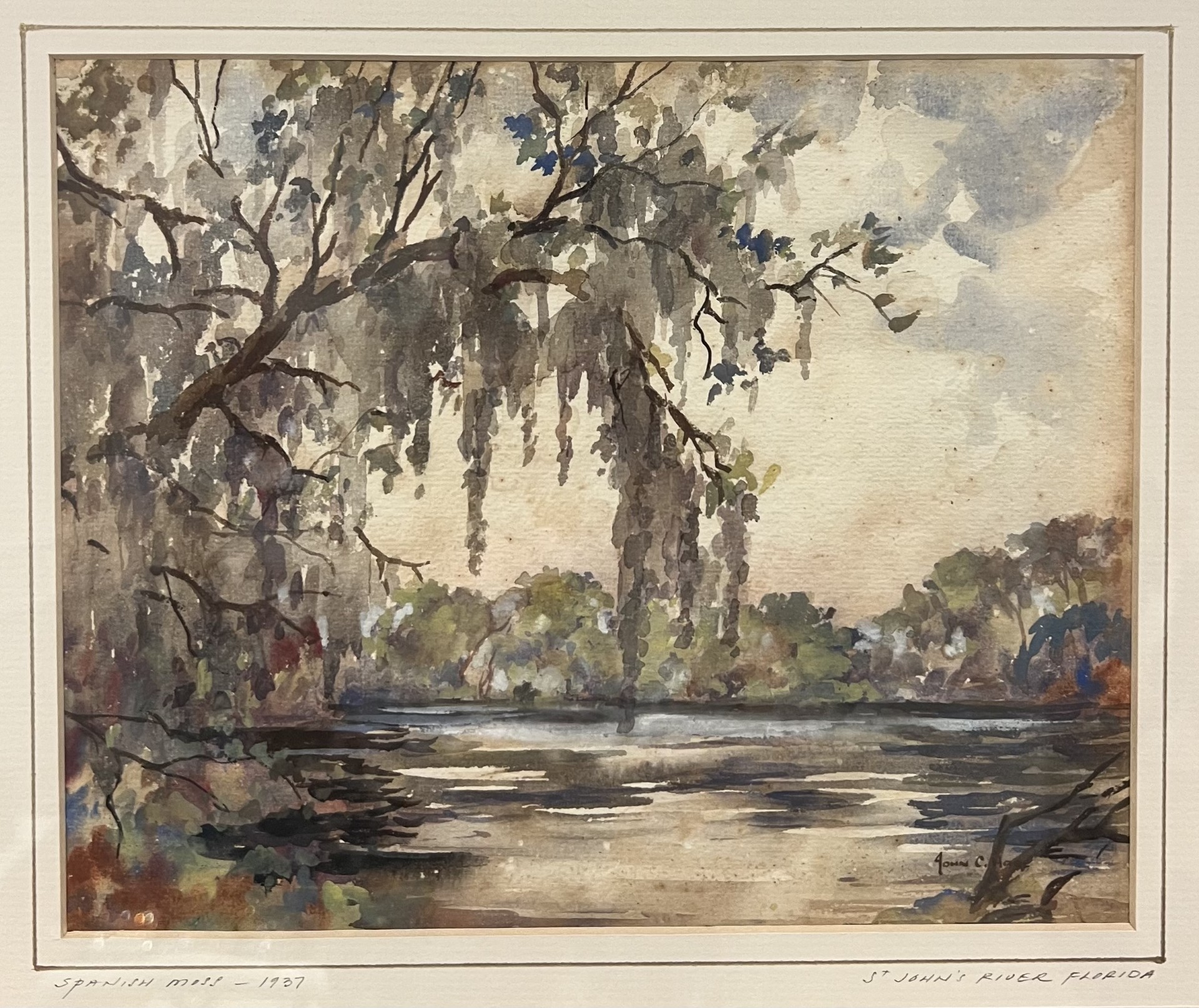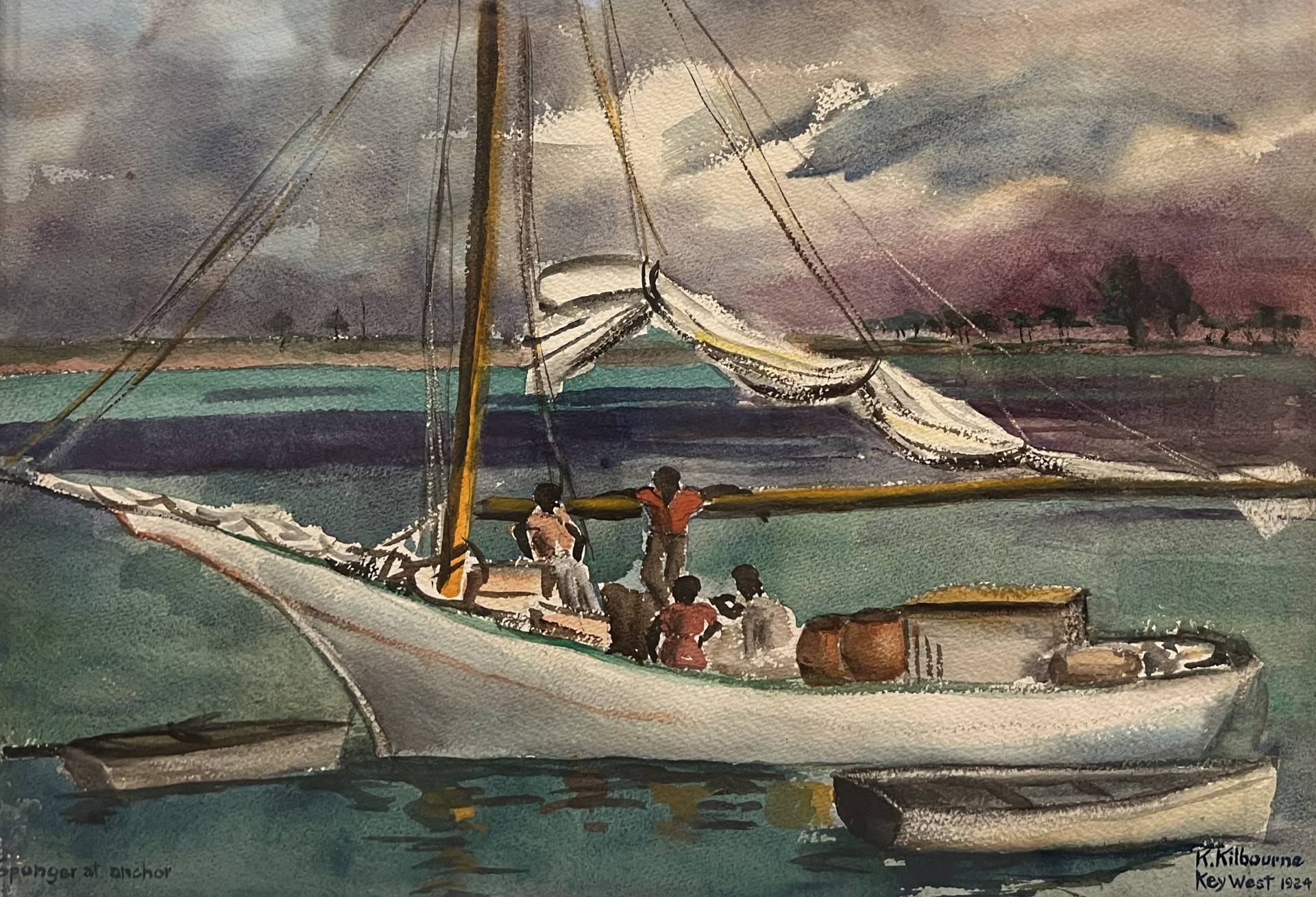

07/15/2025 General, General Paintings, Florida
DOYLE Palm Beach is currently hosting a fascinating exhibition titled Vintage Visions of Florida, a curated selection of artworks available for immediate purchase. These include nostalgic pen and ink drawings of hidden trails, views of solitary palm trees standing tall, green cacti, and Spanish moss dancing along the water.
Florida is a place overwhelmed by heat for much of the year, intermittently surrendering to hurricanes and tumultuous storms. The perfect mixture of humidity, high salinity, and wet; seemingly the perfect conditions to ruin a painting. However, Florida has endured as a destination for artists, whether a visiting paradise or a lifelong home. Painters have rolled up their sleeves and put on their bug repellent gear for over a century, creating artwork that ranks among the most beautiful in American art.
South Florida is home to some of the most breathtaking scenes, as the neighboring Everglades and reefs of the Florida Keys permeate almost everything they touch. Miami was once part of this marshy, coral-filled land before it became a forest of high-rises. The city was built on multiple small islands, similar to the Keys, which have since been connected by highways and overpasses.
Miami, however, still retains some of its roots in the natural world, as the only living barrier reef in the United States surrounds its waters. Despite its beauty and importance, the reef was considered a sailor's nightmare rather than a fun snorkeling destination, long before the advent of modern boating technology. The treacherous ocean was a graveyard of Spanish vessels; a treasure trove lying in wait on the ocean floor.
In the early 1800s, as the Spanish loosened their grip on the land, treasure hunters and sailors alike hunted for the Floridian booty. Despite the promise of riches, the reef remained as dangerous as ever, and ships sank faster than you can say “gold.” To warn this new flotilla, the Cape Florida Lighthouse was built in 1825, now the oldest standing structure in Miami.

Two pieces depicting said boat savior currently hang in the exhibition at DOYLE Palm Beach: a watercolor by Reid Austin and an aquatint by Raymond H. Backes. The burnt orange lighthouse looms over a beautifully clear blue ocean in the watercolor—the perfect contrast of color and structure. Austin’s painted clouds melt into each other and the sky in a harmonious blend, highlighting the rigidity and strength of the lighthouse. The structure is framed by neighboring palms, also shown in the Backes print, Cape Florida Light. The piece reveals the lighthouse in its true enormity, as small seagulls passing by the palm trees amplify its grand scale. The print has the perfect “Old Florida” feel and would work perfectly among old photographs or in a vintage frame, as it is emblematic of a drawing from a captain's log or a pirate’s diary.
The perfection of these lighthouse scenes lies in how they capture a Florida that is now often hard to find—peaceful and quiet, far from busy, music-filled streets or working city centers. Viewing these pieces, one can almost sense the calmness of looking out over the ocean, with swaying boats and the sound of nothing but the wind filling their ears.
In the years following the construction of the lighthouse, treasure hunters were gradually replaced by painters as Florida’s primary visitors. Further up and inland from the lighthouse lies the longest river in Florida, stretching 310 miles and flowing inland of the east coast. The river has had many hosts and roles: it was a vital resource for Indigenous peoples; the French arrived in 1562 and used it as a trading shortcut; it was later claimed by the Spanish, who named it Rio de San Juan and established an outpost; and it was eventually acquired by the British in 1762, who translated Rio de San Juan and gave the channel its current name, Saint Johns River.
Saint Johns River was also used as a waterway for artists traveling up and down Florida, allowing them to navigate the state safely and avoid trekking miles through dense palm and cyprus tree forests. These scenic boat rides inspired countless paintings of the river and the bodies of water it connects.

John C. Cumber Hare, an artist from New York who frequently visited Florida and its coast, depicted the Saint Johns River in 1936 as a peaceful and serene passage. The water is slow and pale, sitting under a grey and pink sky. Whether it’s dawn or dusk, the piece conveys a sense of tranquility and encapsulates the luxury of traveling through rivers rather than the dirt roads at the time. The elegant Spanish moss dances above the water, almost dipping into it to meet whatever creatures are waiting under the surface. As lovely and picturesque as the watercolor is, the river’s one longstanding residents have been reptiles—snakes that bite toes dipping in the water and alligators who chomp on legs hanging off a boat.

Down state road A1A and off the tip of Florida, K. Kilbourne draws inspiration from bungalows and humble boaters, rather than the opulence of what became of southern Florida. The well-known watercolorist depicts scenes of the coast and water in his piece from 1924, Spongers at Anchor. The humble pre-polar icecap melting origins have shaped the nautical culture of the keys, as it is home to a plethora of rich and diverse sea life, including large and full sponges. In the watercolor, a boat rests on the ocean under a smattering of dark purple and grey clouds. The workers are calm and unphased, despite the impending thunderstorms, showing their true affiliation with the climate. Any Floridian native is accustomed to the average 3 pm hurricane-like rainstorms. Because of this, Kilbourne’s figures are seen resting against the boom and taking in the incoming seas. Although the watercolor is a hot and sleepy afternoon on the water, the paints are still alive with the spirit of Florida and its intense hues. Key West began as a coral forest, like most of the key islands, but has since evolved into a forest of cabanas and seafood spots. The artist exemplifies the Jimmy Buffet-esque, laid-back, salty dog image of Florida. This work truly highlights the diverse and wide range of subjects Florida has to offer to old and recent masters. Colors truly stand out in fine art from Florida, thanks to the natural vibrancy of the Sunshine State. The waters are strikingly teal, complemented by the bright baby blue skies.
The late 1800s and early 1900s were an incredibly fruitful period for the creation of Floridian art; the exotic untilled land and growing economy created a demand to explore the state from coast to coast and document all its glory. From the pearl white sea foam of waves to the soft cream-colored shells on Key West beaches, every piece of Florida is its own work of art.
The state is home to some of the most unique and diverse biomes in the country, and home to some of the most incredible flora and fauna one has ever seen. The palmetto of South Carolina is thick, and the California fan palm is absurdly tall, but nothing beats a Florida coconut palm. The leaves rustle and create music in the wind, filling the air with the feeling of a Margaritaville concert. Despite the rhythmic calm of the leaves, the long stems sway in their own complex way, creating at once a sense of strength and fragility.
Florida will always be popular, with Floridian art solidifying the state’s place as one of America’s most paintable places.
— Hadley Finch
DOYLE Palm Beach
Summer Intern 2025
Look for Part II of this essay on Friday, July 25, online and in DOYLE Notebook.
On view Monday – Friday, 10am – 5pm, through August 1.
DOYLE
Auctioneers & Appraisers
210 Brazilian Avenue
Palm Beach, Florida
561-360-2308
DoyleFL@Doyle.com